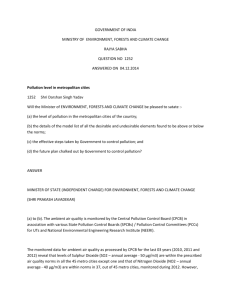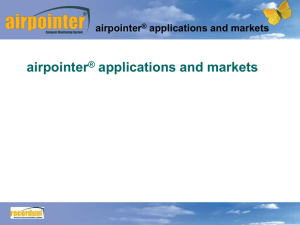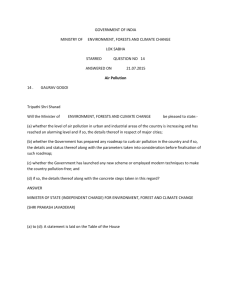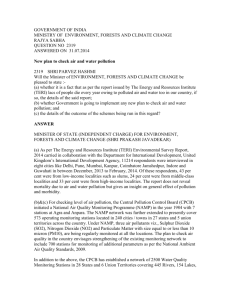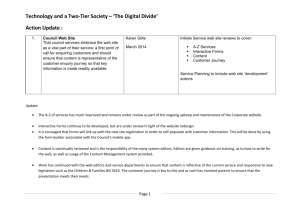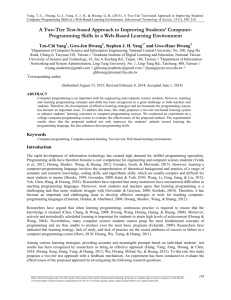Problem of pollution in two-tier cities
advertisement
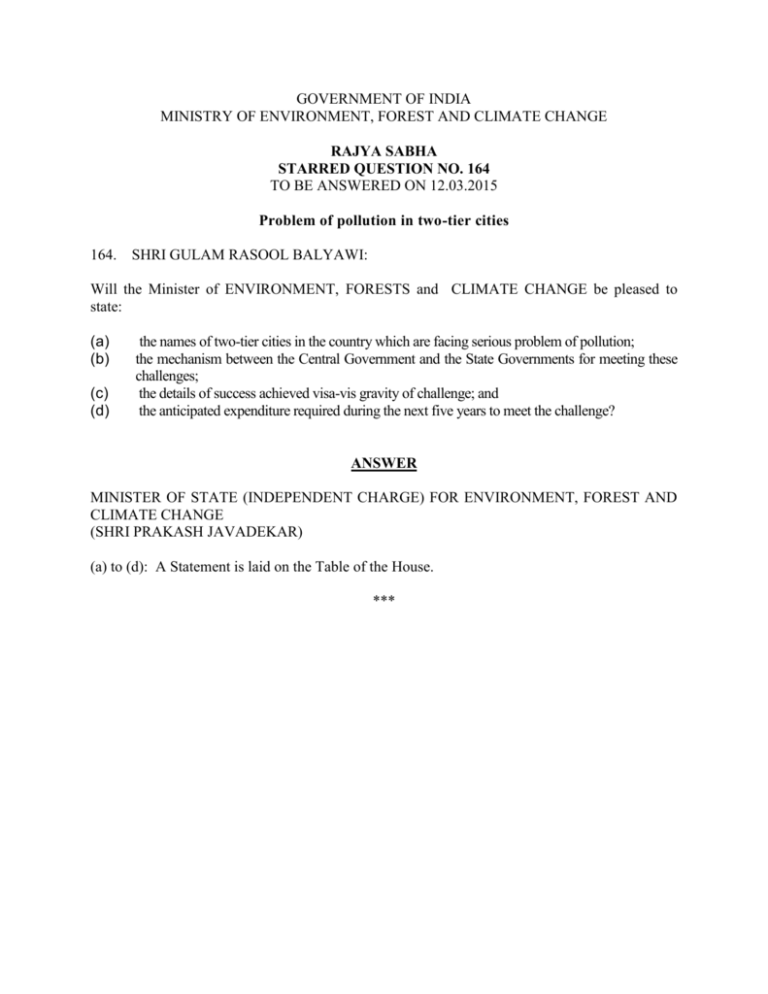
GOVERNMENT OF INDIA MINISTRY OF ENVIRONMENT, FOREST AND CLIMATE CHANGE RAJYA SABHA STARRED QUESTION NO. 164 TO BE ANSWERED ON 12.03.2015 Problem of pollution in two-tier cities 164. SHRI GULAM RASOOL BALYAWI: Will the Minister of ENVIRONMENT, FORESTS and CLIMATE CHANGE be pleased to state: (a) (b) (c) (d) the names of two-tier cities in the country which are facing serious problem of pollution; the mechanism between the Central Government and the State Governments for meeting these challenges; the details of success achieved visa-vis gravity of challenge; and the anticipated expenditure required during the next five years to meet the challenge? ANSWER MINISTER OF STATE (INDEPENDENT CHARGE) FOR ENVIRONMENT, FOREST AND CLIMATE CHANGE (SHRI PRAKASH JAVADEKAR) (a) to (d): A Statement is laid on the Table of the House. *** Statement referred to in reply to Rajya Sabha Starred Question No. 164 due for reply on 12.03.2015 regarding ‘Problem of pollution in two-tier cities’ by Shri Gulam Rasool Balyawi:, Hon’ble Members of Parliament. (a) to (d). As informed by the Central Pollution Control Board (CPCB), towns/cities having population between 50,000-99,000 are classified as two-tier cities. The ambient air quality is monitored by concerned State Pollution Control Boards (SPCBs) in two-tier cities under National Air Monitoring Programme (NAMP) coordinated by CPCB and at present NAMP network covers 68 two-tier cities /towns. As per analysis of air quality data for said 68 two-tier cities for the year 2012, the levels of Sulphur Dioxide (SO2) were within norms (annual averages), levels of Nitrogen Dioxide (NO2) exceeded the norms (annual averages of 40µg/m3) in one city only namely, Saraikala (Kharsawan), Jharkhand whereas, the levels of Particulate Matter(PM10) have exceeded in 48 cities. The Government has taken various measures to contain air pollution in the country, which inter-alia include, supply of cleaner fuels as per Auto Fuel Policy, pollution under control (PUC) certificate system for in-use vehicles, stringent source specific emission standards for air polluting industries, use of beneficiated coal in thermal power plants, strengthening public transport, implementation of revised emission norms for gensets and cement plants, etc. The actions to address the challenges posed by pollution are inter-ministerial in nature and involves various organs of the government at Central as well as State level including localself governments. It may not be possible to estimate the expenditure made or anticipated on various actions in this regard. Due to various steps taken, there is a reduction in levels of Sulphur Dioxide (SO2) and Lead in ambient air and levels of SO2 and Lead are within notified norms (annual averages) across the country. There is a rise in compliance of environmental standards in 17 categories of highly polluting industries. ****
